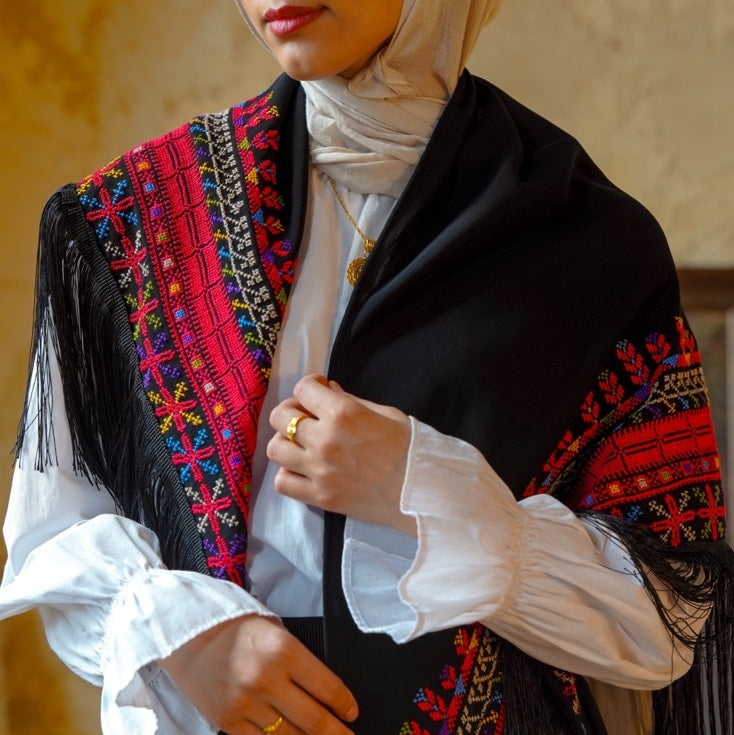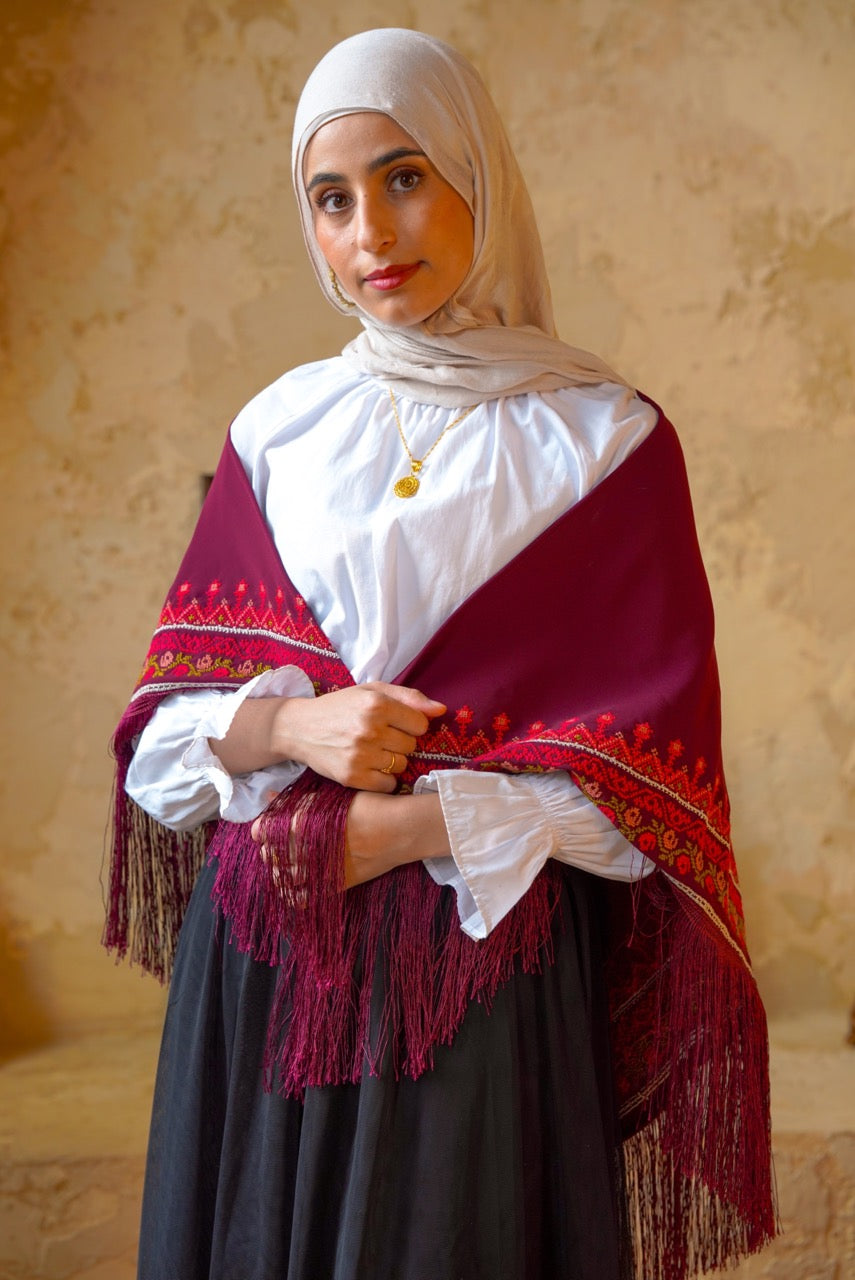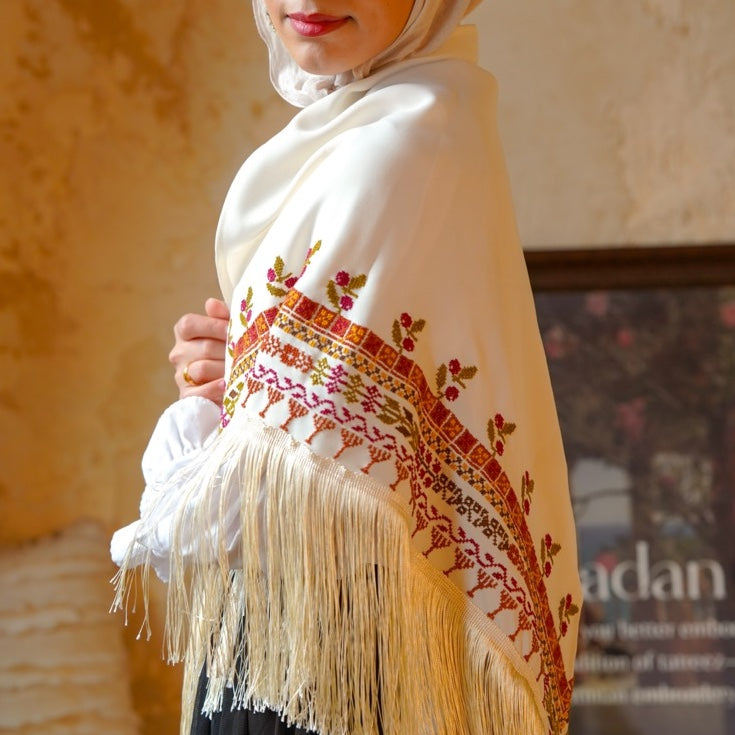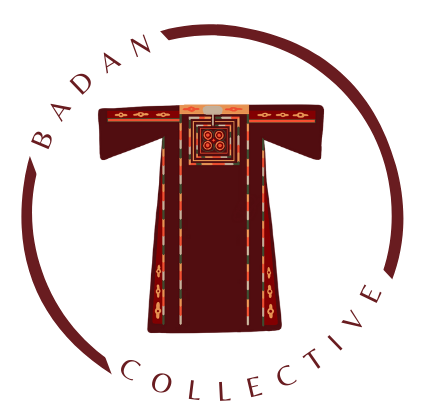Three Pieces, Three Stories
These hand-embroidered shawls each carry their own story. Designed in-house and stitched in Palestine, each motif carries meaning so that you not only wear tatreez with pride but embody it with intentionality. Pause for a moment, read, and delve into the stories below. Let us begin with...

"An Everlasting Resistance" includes motifs like barbed wire, martyrs graves, and watches to tell the story of Palestinian resistance. The motif that encapsulates this the meaning most is one we combined, containing both "The False Tree" and "The True Tree." The False Tree is facing inwards and is stitched in many colors while The True Tree is facing outwards only being in one color—white. This is meant to encapsulate the experience of witnessing the genocide in Gaza. In its early days especially, we witnessed lies, propaganda, false justification, betrayal, and the smearing of Palestinians' identities. The False Tree is facing inwards to signify what Palestinians were on the receiving end of: falsehood in all its shades and colors. Instead of internalizing that, what Palestinians offered the world in return was, not bitterness, but one shade of truth—displayed here as The True Tree in white. A Palestinian's reliable narrations will always stand the test of time.

Often times, Palestinian love is riddled with grief, rightfully so. Palestinians, especially those living under occupation, have taught us how to live despite and during difficulty. There is no erasing that, but we wanted to imagine a world and create a piece where Palestinian love could exist beyond grief. A Palestinian's greatest asset is their heart, their generosity, and their passion for life. "A Lover's Tale" captures the essence of this imagination in its design to remind us all that Palestinians are just as worthy of love, joy, and celebration as anyone else.

"A Palestinian Harvest" is a design that was born on the 60th day of the assault on Gaza. It’s now been several months and years since then, and the genocide is still ongoing. This piece was created out of a sense of helplessness watching, witnessing genocide with no ability to change it. Frustration turned itself into creativity, necessity. Its design is meant to represent rightful ownership of indigenous land. There are all sorts of motifs in this design of various plants found in Palestine including a flower motif that resembles a poppy flower, apples, pears, corn, chickpeas, hawthorn, and more. Perhaps the most intricate is one we combined together to create a new assembly—containing the flower, apples, olive branch, pears, and berries. It is the third row of motifs in this design and, in a way, represents the beautiful array and diversity of the diaspora. As Palestinians, many of us scattered across the world, the one thing that unites us is the land and our right to return to it. We are separated now, but when we return, our experiences in the diaspora will only enrich our Palestinian identity.
